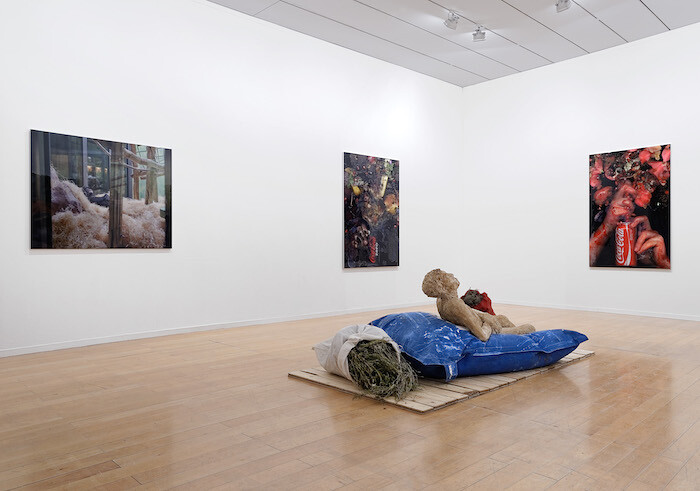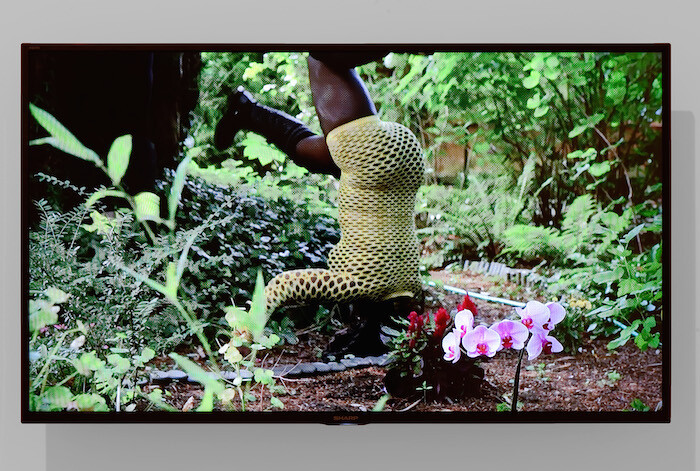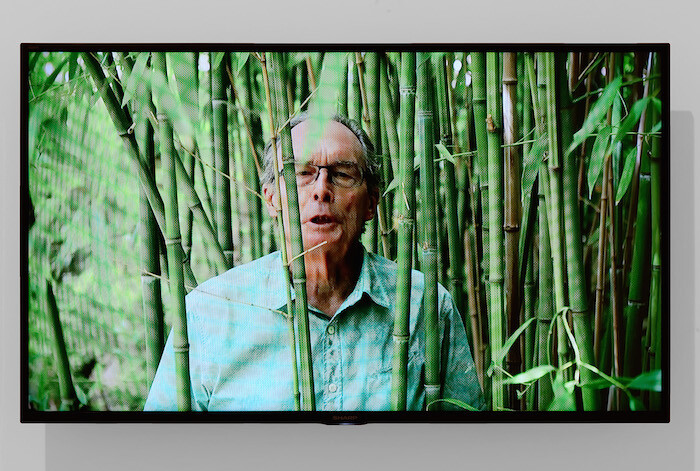September 10, 2015–January 3, 2016
This relatively modest biennial possesses the unique character of being something of an assignment. Invited by Lyon Biennale director Thierry Raspail, curator Ralph Rugoff was given a word—modern—upon which to base his biennial, and Rugoff responded with the title and concept “La vie moderne.” Less a concept than a multifaceted point of departure, with it Rugoff repeatedly emphasized a couple of different key points in the fashioning of his exhibition. The main one was essentially of the order of William Faulkner’s notorious and very modernist appraisal of, well, the past: “The past is never dead. It’s not even past,” (although Rugoff did not cite Faulkner), in the sense that the curator was interested in the persistence of the modern within the so-called contemporary. Roughly speaking, this was the overarching contour of this biennial—a contour broad enough to host a number of relevant concerns, ranging from questions of post-colonial identity, to acceleration, to accumulation, in the form of, say, trash (Rugoff, from the press conference: “There’s a lot of trash in this biennial”), among other things. All that said, I am wasting my word count and my reader’s time fleshing out some kind of conceptual armature that was essentially as light-handed as the touch of Rugoff’s curating itself. This is not to say that “La vie moderne” was not curated, nor devoid of ideas, but rather that the curator, for better or for worse, remained within the coulisses du théatre and created an exhibition that focused a lot more on art than the illustration of a given concept or, worse, the construction of some elaborate theoretical edifice to which any attendant art becomes mere ornament.
Basically located at two sites in Lyon, La Sucrière—a repurposed sugar factory—and the Museum of Contemporary Art (macLYON), this biennial wields the rare virtue of being approachable, even viewable, in one day. It is human-sized. It is dominated by discrete, solo presentations, especially in the mac. It is well and evenly cadenced, full of strong work, a handful of happy surprises, a few dependable disappointments, and a number of anemic anomalies. Before more or less banishing the curator and his curating to the margins of this review in favor of an evaluation of (some) of the art on display, I would like to say that although this biennial is a little less curated than I prefer (e.g., canny juxtaposition, narrative, etc.), I like it. Mindfully rooted in the region, it combines a goodly selection of local, French artists (of the some odd 60 artists in the show, over a dozen are French or based in France) with an international cast of African, Asian, European, and North American artists, and as such bears a markedly global tenor. Its contents range from Rugoff favorites, such as George Condo, Jeremy Deller, Mike Nelson, Ed Ruscha, and David Shrigley to younger positions such as Nina Beier, Alex Da Corte, Anthea Hamilton, Marina Pinsky, and Lucie Stahl, all of whom are new, if unexpected, suspects on the international biennial circuit. A compelling immediacy is apparent throughout the entire show, insofar as a kind of direct experience is generally prioritized via the object (sculpture and installation) and the image (painting, video, and some photography) over, say, the archive and more research-based or pedagogical modes of art, which are virtually and refreshingly absent here.
Some of the more memorable standouts include the Taiwanese artist Yuan Goang-Ming’s video Landscape of Energy (2014), whose drone footage of holiday-makers gathered like ants on a beach next to a nuclear plant is inexplicably, if gently, harrowing. A fitting pictorial counterpart to this could be found in the mac, with the German Thomas Eggerer’s painting Waterworld (2015), which portrays an expanse of water teeming with fungible white bodies. Nina Canell’s multi-part installation Satin Ions (2015), made of underground telecommunication cables, some of which were melted into strange, excremental piles, is an entrancing reflection on the materiality of the so-called immateriality of the contemporary world. A no less poignant reflection on materiality, technology, as well as time could be seen in Klaus Weber’s Clock Rock (2015), which consisted of a mechanized grandfather clock pendulum swinging from the bottom of a rock on a wall. The prize for sheer, splendid WTF-ness goes to Argentine choreographer Cecilia Bengolea and Jeremy Deller’s rap video shot on the estate of a local retired, old white guy and three variously voluptuous dancers grinding, pumping, and twerking in front of him while he impassively raps and occasionally dances. Talk about the confluence of the modern with the contemporary. I could have watched that weirdness for hours, but the one video that I had to go back and see at least twice was French artist Cyprien Gaillard’s Nightlife (2015). Having always had mixed feelings about Gaillard’s work, largely due to its utter dude-ness, I was totally won over by this elegiac monster. Projected in 3D, the complex video consists of slow-motion, nighttime footage of trees, plants, and foliage dancing in Cleveland, Berlin, and Los Angeles to a soundtrack of the chorus from two different versions of Alton Ellis’s “Black Man’s Pride.” Unreal, sculptural, dancerly, and finally even animistic, Gaillard’s video touched upon new heights of a plausible, plastic lyricism.
As for duds, there were certainly a few, but none so spectacular as the dependably trite and tenuous elegance of Tatiana Trouvé’s large installation of framed drawings The Longest Echo (2014), composed of works Intranquillity, Remanence, Deployment, Les Désouvenus (The Unremembered Ones), all images of her 2014 exhibition “The Longest Echo,” detailing her supposedly strange, surrealistic interiors. The biggest misses, however, came in the form of what is traditionally known as post-Internet art. Its essential flaw is put into relief by the title of the biennial itself, which comes from Baudelaire’s 1863 article “Le Peintre de la moderne.” Defining modernity in that same piece, he writes: “Modernity is the transient, the fleeting, the contingent; it is one half of art, the other being the eternal and the immovable” (emphasis mine). Maybe I am just a classicist, but the enduring truth of this observation seems to me incontrovertible. How the theoretically interesting, but plastically traction-less work of, say, Katja Novitskova will be interesting a few years from now is perhaps little less debatable than the suspicion that—and here I know I am going out into a field all alone—Simon Denny’s elaborate installations are nothing more than the three-dimensional equivalent of the immediately exhaustible journalism mourned in Walter Benjamin’s “The Storyteller.” While it is moderately interesting to see the confiscated personal effects of Kim Schmitz, the jailed founder of Megaupload, IRL, as it were—which are the essential contents of Denny’s installation here, The Personal Effects of Kim Dotcom (2014)—they remain ultimately untouched by the alchemy of transformation, which is that magical, quasi-sci-fi quality that allows art to travel through time and still remain relevant.













